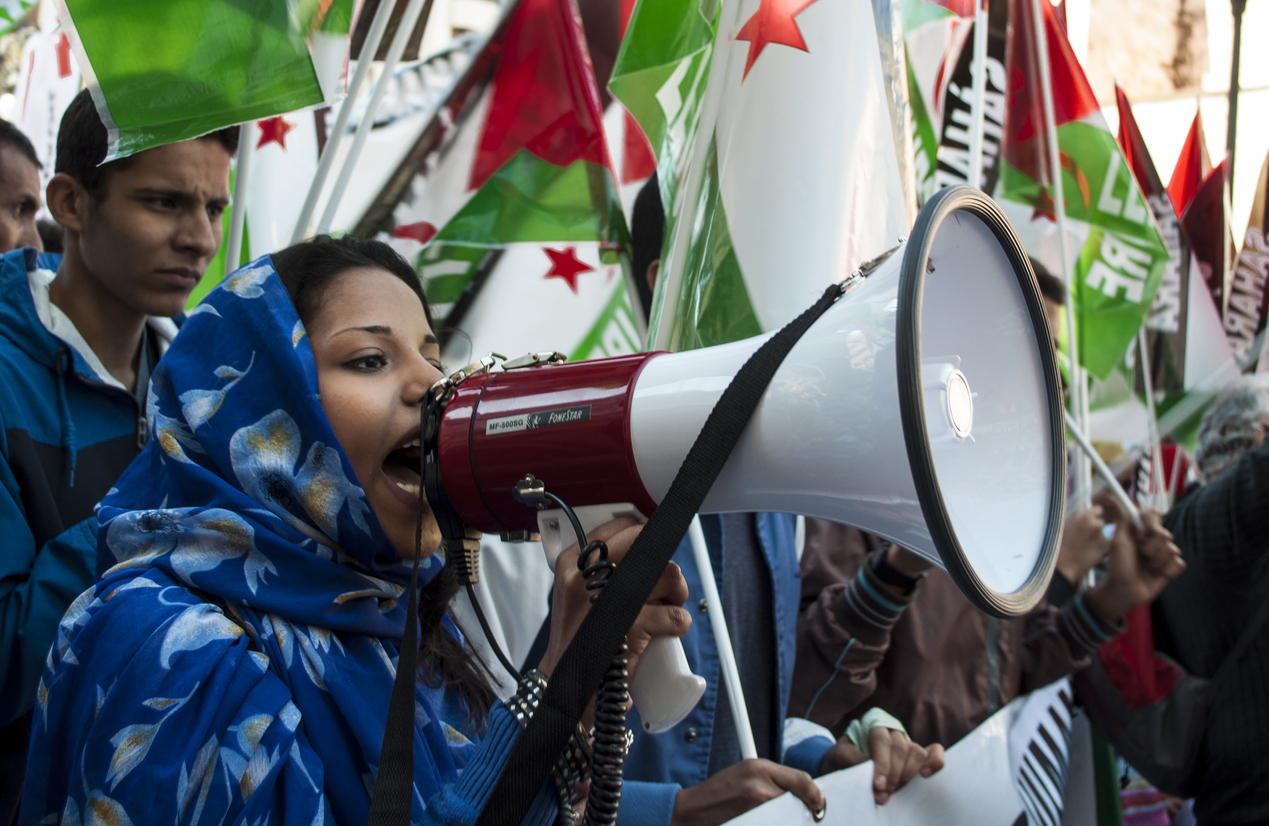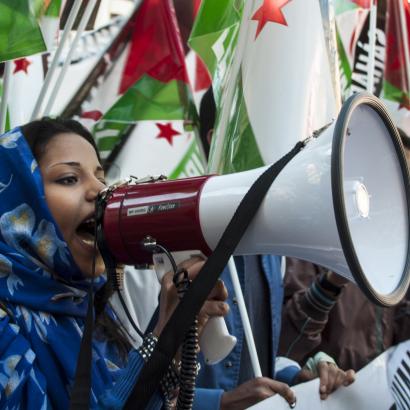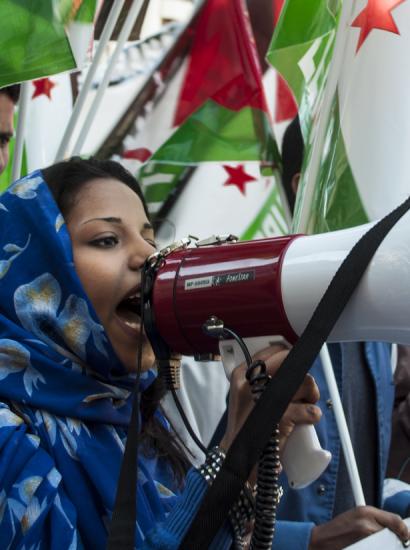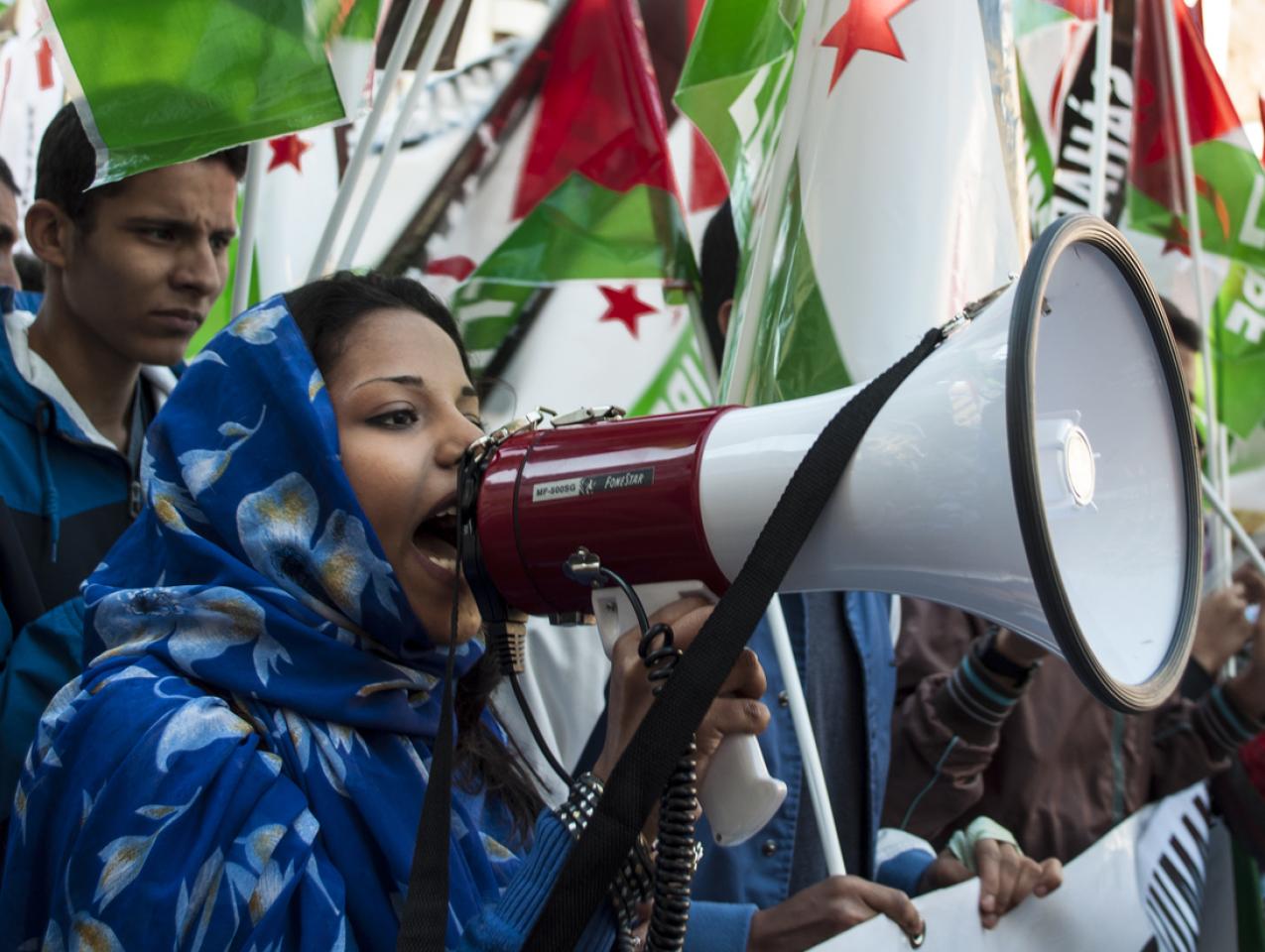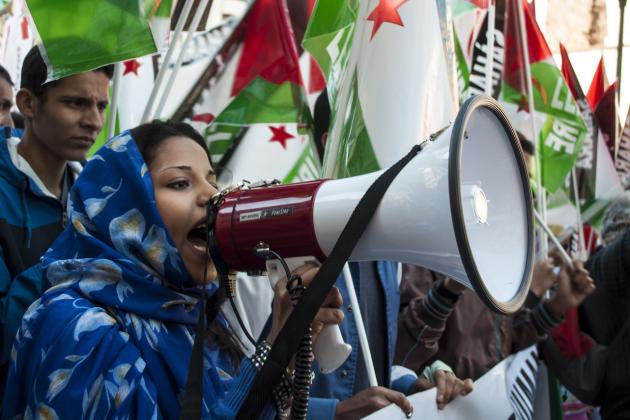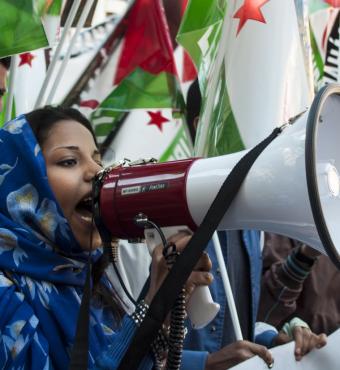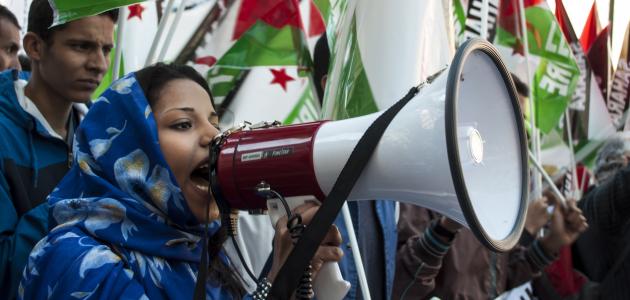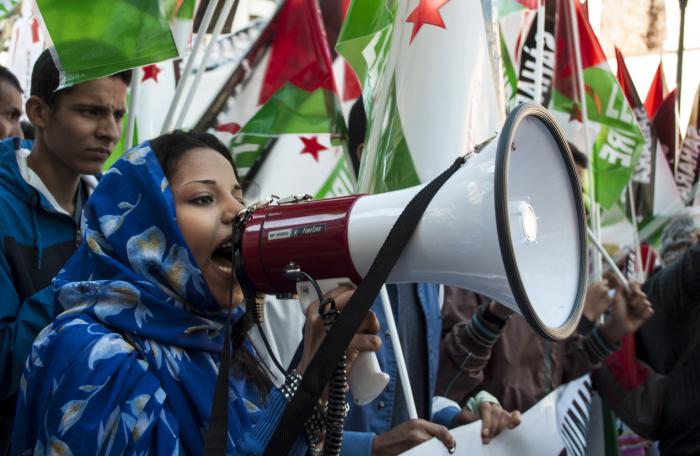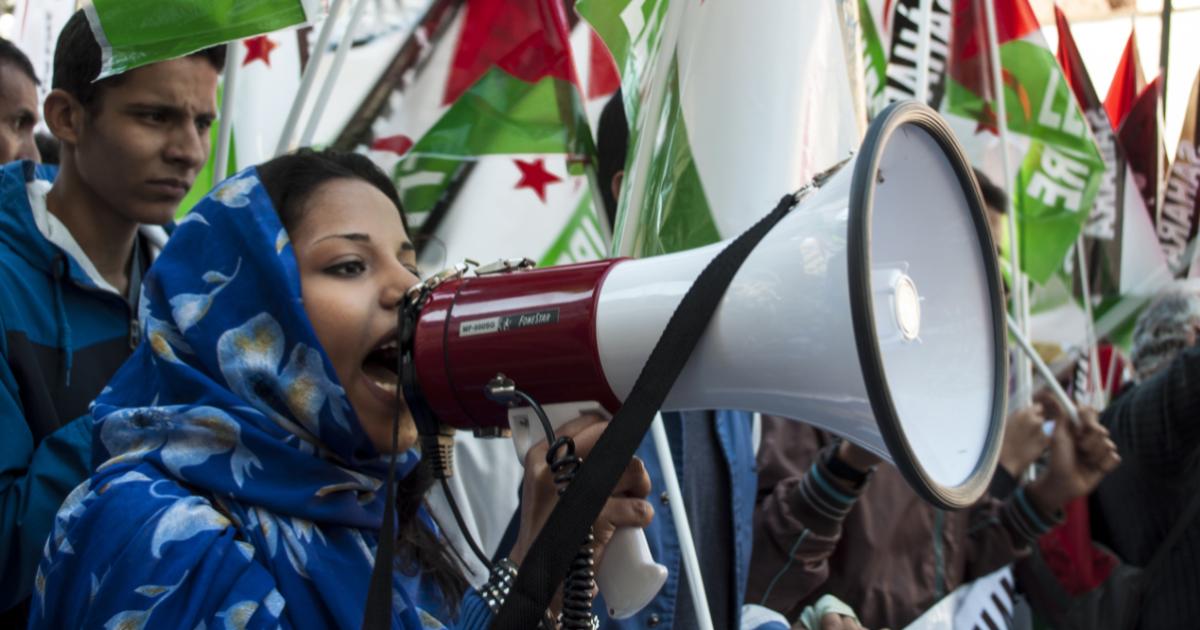- Middle East
- Determining America's Role in the World
The clerical regime in Tehran has held the streets. It remains to be seen, however, if the strategies employed to keep the ayatollahs afloat will prevail. When Mahsa Amini, a young Sunni Kurdish-Iranian girl, died on September 16 in the custody of the morality police, nationwide demonstrations erupted, often with young women and girls on the frontlines. In Iranian Kurdistan and Baluchistan, where ethnic and religious grievances can quickly blend into larger causes, protests have been the most tumultuous, sometimes in the tens of thousands. The majority of those killed and seriously wounded have come from these two provinces. In the streets and on social media, we can hear echoes of past protests; other elements are at play this time round, however, making the ongoing demonstrations, their gravamen against the regime, essentially unsolvable.
Widespread arrests, which in the Islamic Republic often include torture, have been constant, with the regime deploying high-tech and more old-fashioned methods of coercion to collect information on those protesting. The tactics have worked in so far as the theocracy hasn’t seen the demonstrations grow in size; violence against the regime’s security forces appears to be petering out, at least in the big, majority-Persian cities. The supreme leader, Ali Khamenei, has repeatedly said that these “riots” are foreign-inspired and -directed, dismissing the protestors clarion call for an end to the Islamic Republic. For the young who have joined, he has recommended reeducation—a bigger, more efficacious injection of the Islamic way of life. More tactically, the regime has, at least temporarily, given up on forcing women to wear the hijab. The theocracy surely hopes this sartorial compromise will take some wind out of what is clearly a revolutionary movement, reducing the chances that young women and girls will get killed or sexually assaulted by over-zealous security forces. The regime likely wins this struggle, in the short-term, so long as angry men don’t overwhelm the big cities.
It’s crystal clear, however, to many in the Iranian religious and political elite, and it may well be clear to Khamenei, too, that for Iranians under 40 (around 60 percent of the population), there is zero chance that they will re-embrace the Islamic Republic. Even for those older, it’s doubtful they have much affection for the theocracy left, especially given its conduct towards their children and grandchildren. The retired Dartmouth academic, Misagh Parsa, in his book Democracy in Iran, used an extensive array of official Iranian documentation to show how disaffected Iranians have become.The Islamic Revolutionary Guards, who are the muscle behind the theocracy, often have sponsored the most damning research on the irrevocable split between society and state. Unlike the last shah of Iran, Mohammad Reza Pahlavi, the Islamic Republic’s rulers aren’t living in a bubble.
Western Iran-observers estimate that the regime today has a base of about 30 percent of the population, composed primarily of the urban and rural poor, who are wedded to the theocracy through religion and self-interest (the Islamic Republic has an extensive, though poorly performing, welfare system). After the nationwide demonstrations in 2017-2018 and 2019-2020, which brought the working class onto the streets, as well as the protests that we have seen since, it’s questionable whether that number is accurate.
The regime obviously still has sufficient manpower to maintain its myriad security units, especially the all-critical Basij, who are the theocracy’s Brownshirts, and the Revolutionary Guards. In the demonstrations since September, which have been more alarming to the regime than the near insurrection of 2019, the security forces, though strained, have shown no signs of cracking. Enough young men still appear willing to kill and torture enough women (and men) in the zan–zendegi–âzâdi (Women, Life, and Freedom) movement to keep the demonstrations from mushrooming into million-woman marches. Although the current protests have revealed considerable class and ethnic solidarity, we haven’t yet seen the energy and numbers that we saw in the pro-democracy marches in 2009, which may have reached a million in Tehran; notably, Azeri Turks, who likely compose at least a fifth of Iran’s population, Arabs of Khuzestan, who got hit hard in the 2019 crackdown, and Persians 30 and over haven’t ardently jumped into the ongoing protests against the theocracy.
Iranians, especially ethnic Persians, who want to abolish the Islamic Republic haven’t yet shown the kind of bloody-minded, death-defying street resolve that working-class Sunni Syrians threw against the Alawite forces of Bashar al-Assad. That timidity may be an astute judgment call given what that kind of violence can lead to. Nonetheless, the theocracy surely would prefer to confront constant, widespread contempt, small demonstrations, and strikes than a revolutionary sea of people in major cities.
The regime and the people are in a lop-sided duel since only the former has bullets (other than the Baluch and a few Kurdish groups, who’ve always had weapons and a willingness to use them). Nonetheless, the theocracy appears profoundly anxious, given all the fretting, aspersions, and self-criticism pouring forth from erstwhile loyalists and current allies of the supreme leader, even among those, like Ali Larijani, Hassan Rouhani, and Muhammad Reza Bahonar, whose histories are inseparable from the coercive foundation of the Islamic state. One would expect Mir-Hussein Mousavi, a lay leader of the pro-democracy Green Movement who has been under house arrest since 2011, when he expressed too much support for the Arab uprisings, to take a dim view of theocracy. It’s not clear how much standing the 80 year-old has among the young. Nonetheless, his recent call for a referendum to abolish the Islamic Republic’s constitution, which legitimizes clerical rule, appears to be echoing through society.
Perhaps more worrisome for the regime, senior clerics now openly express concern about politics degrading the faith. The regime understandably responds quickly to such criticism, either through solicitation or intimidation. Its sense of self, especially within the military and security services, revolves around Islam. Always uncomfortable with Iranian nationalism (Khamenei still routinely belittles it as a divisive force separating the umma, the larger Islamic community), savvy, younger revolutionary clerics may well know they have irretrievably lost nationalism to the increasingly secular opposition. If the regime were to lose Islam, that is, if the ruling clergy were no longer the sole proprietor of what is “the straight path,” that might debilitate those who are on the front lines doing the dirty work.
The Islamic Republic’s ruling elite aren’t cynics or run-of-the-mill Middle Eastern despots, who find legitimacy in the simple fact that they hold the reins of power or that they possess a historically significant, victorious bloodline; theocrats, and a sufficient number of their foot-soldiers, want to believe that they are doing God’s work. That sense of purpose is surely critical to the regime’s survival, and will be fundamentally challenged especially if the opposition can generate large protests, which might challenge the mores of young men called upon to continuously bring violence upon young women. The regime could get caught in a philosophical vice-grip: the areligious (or irreligious) youth from one side and dissident senior clergy from the other, both eating away the resolve of the security services.
As it is, the second guessing and self-criticism on the part of the regime and the clergy since September may have altered the theocracy’s approach to crushing dissent. The regime’s “low-key” intimidation campaign—shoot a few hundred (mostly minorities); officially execute a small number of protestors after judgments from closed courts; arrest thousands, abuse many in prison, release many perhaps most and amnesty some—likely all aims to scare the older generation to keep the younger generation at home. Khamenei and the Revolutionary Guards don’t seem to want to put that much pressure on society or their own kind. It’s still unclear whether they think they could go full throttle against their enemies. Their wavering allies, who keep their fingers in the air, gauging whether the young have sufficient persistence and strength, seem to fear that the regime will go really bloody and that it could backfire. It’s a decent guess that everyone in Iran expects there to be more galvanizing incidents like Amini’s death. The Islamic Republic’s new normal is permanent internal instability.
Even though the supreme leader and many of his henchmen appear sincere in their conviction that foreign forces—Americans, Europeans, Zionists, and the Saudi-supported foreign Persian media—have inspired if not directed the zan-zendegi-âzâdi movement, Iranians in the streets and their supporters at home know better. Except for the occasional meeting with well-known Iranian expatriates and offering sympathetic rhetoric, Western statesmen have remained on the sidelines, watching to see whether the protests could generate what none of them are willing to support publicly: regime change. The United States and the European Union have thrown minor human-rights sanctions of dubious impact at Iranian officials, the Islamic Revolutionary Guard Corps, and its subsidiaries. Relatively few Westerner observers, let alone statesmen, mention what many Iranians say easily: the Iranian people, who’ve been striving to check arbitrary power in Tehran for over a hundred years and have, even under a theocracy, pushed to create a political system where the people have real authority, want to create today a secular democracy. Westerners, with Americans in the lead, are still in the grip of the last Iraq war, the chaotic denouement of the “Arab Spring,” and a more generalized allergy to being hopeful about anything involving Muslims.
Unless Iranians can generate new, massive protests, Western attention will return to where it’s usually been since an opposition group revealed the Islamic Republic’s hitherto clandestine atomic program in 2002: nuclear diplomacy. Khamenei may have told the West to go pound sand, but the Islamic Republic’s diplomats keep dangling the possibility that some deal might be possible. Unwilling to contemplate military strikes against Iran’s nuclear sites, which realistically are the only way, beyond paralyzing internal convulsions, that the advancing program might get derailed, American officials now hope that maybe Khamenei, who has taken a patient approach to building nuclear weapons, will be satisfied with a program that doesn’t construct and test a device. Given the sacredness of arms-control in America and Europe, even a test may not change the West’s approach. The Iranian regime knows how diplomacy for Westerners is like the luminescent rod of flesh dangling before the mouth of an anglerfish.
A defecting Iranian diplomat once remarked that the regime always prefers to talk about the nuclear question, not human rights, with their Western interlocutors. Most often, Western diplomats and politicians have obliged. If Iranians are going to pull off another revolution (it would be their third in a little over 100 years), they are going to have to do it by themselves. As they have become the most politically mature Muslim denizens of the Middle East since they have tried so many things and failed, it’s possible the third time will be a charm.
Mr. Gerecht, a former Iranian targets officer in the Central Intelligence Agency, is a resident scholar at the Foundation for Defense of Democracies.







